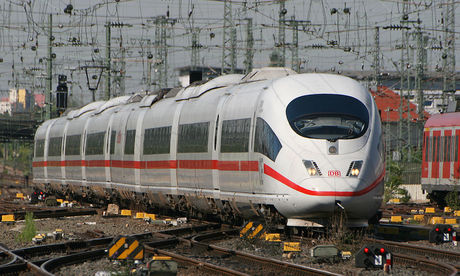The rise of multiplatform radio

Is a multiplatform, software-defined approach the way of the future for critical communications?
With the profusion of radio technologies available today, all of them with their good points and bad, it can sometimes be hard to find a single solution that fits every need. Enter multiplatform, software-defined radio (SDR), which promises to link multiple radio technologies together to provide operators the best of all worlds.
Denmark’s DAMM is a world leader in this field, so to get some more insight into the progress of SDR, we spoke with the company’s head of support and product management, Jochen Bösch.
There’s been a lot of talk about devices becoming multiplatform and software defined, but is it actually happening?
There is still much confusion about the multiple technologies in use — DMR, TETRA, LTE and so on — all of which have their strengths and weaknesses. The market is calling for a combination of technologies with full integration. Software-defined radio offers customers the freedom and flexibility to configure their air interface with regards to the technology.
Integrating the customers’ different existing technologies, and also accommodating for requests such as DMR simulcast, which can operate in VHF along a railway line, clearly calls for an integrated SDR solution.
Is it happening? Yes, DAMM has brought the new MultiTech Platform to the market, which integrates multiple technologies in one platform — and even in one box — by making a full interconnection and full transcoding at the core between the different technology modes.
SDR means that you can change the technology on the radio interface via software, so in the same hardware you can swap between DMR and TETRA with a simple click. Frequency and filters are hardware dependent, but carrier bandwidth is also software defined and goes along with the chosen technology.

Which kinds of customers demanding this sort of flexible infrastructure?
Different kinds of customers showed great interest in the MultiTech Platform that DAMM presented at Critical Comms World in Amsterdam this year. Customers in oil and gas have called for a combined infrastructure system of analog and TETRA, which is ideal for an oil platform. A DMR and TETRA combination has been requested by public safety customers to cater for coverage/capacity in rural as well as urban areas. And a TEDS and TETRA combination was in high demand from the utility sector, where SCADA is critical.
Not only is there a demand for flexible infrastructure, but also for the benefits of one interface for all technologies — TETRA, TEDS or DMR — which is of particular interest to the rail industry.
Does DAMM see SDR becoming dominant at some point in the future, or will it be restricted to certain applications, end-user sectors or niches?
We believe that the freedom and flexibility of SDR is the future. Consider how quickly and unpredictably technologies are evolving today compared to conventional analog radio systems, which lasted for 40 to 50 years. Disruptive technologies are creating a cautiousness in the market, where customers want to avoid a technology lock and also want to avoid a proprietary solution that could be very costly. With an SDR infrastructure, a simple upgrade of the software can enable you to cater to future technologies, which will reduce the TCO.
SDR will truly benefit a variety of industries and sectors, because it is so versatile. As for specific industries, I would nominate the oil and gas sector, and also utilities, where DMR is often chosen in order to keep down costs on the terminal side. However, DMR does not provide sufficient bandwidth in order to collect data. For data, you would run TETRA or TEDS, and in parallel you would run DMR, which would be sufficient for voice.
Your local dealer, GMG Solutions, will be exhibiting DAMM products and solutions at Comms Connect in Melbourne in November. What can visitors expect to see?
At Comms Connect visitors can expect to learn more about the BS422 MultiTech Platform and the proven track record of GMG in Australia. The success is built on the legacy of DAMM TETRA infrastructure, including the BS421 outdoor and the BS418 indoor base stations. The compact, rugged and power-efficient BS421 outdoor base station is ideal for the mining sector or trackside for rail. With a low power consumption it can even run on solar power, thereby reducing operational costs as well as installation costs significantly.
The integrated software solution with one interface for all applications, we feel, has great appeal. With the full integration of different technologies, it is easy to manage assets with built-in applications such as network management, dispatcher and voice and data logging.
GMG will also showcase the DAMM TetraFlex soft terminals for iOS, Android and Windows, which enables operators to use TETRA over LTE or Wi-Fi.
The Comms Connect Melbourne conference and exhibition will be at the Melbourne Conference and Exhibition Centre from 23–24 November. Click here for full details, including free exhibition passes.
Customised rugged tech shaping the next era of defence comms
Rugged computing platforms are becoming central to how armed forces protect communication...
A guide to aquatic survival this summer
While most Australians are planning aquatic adventures this summer, less than a third are...
Maher Terminals enhancing operations with private wireless
Maher Terminals chose the Nokia Edge platform because it needed a secure, reliable,...



